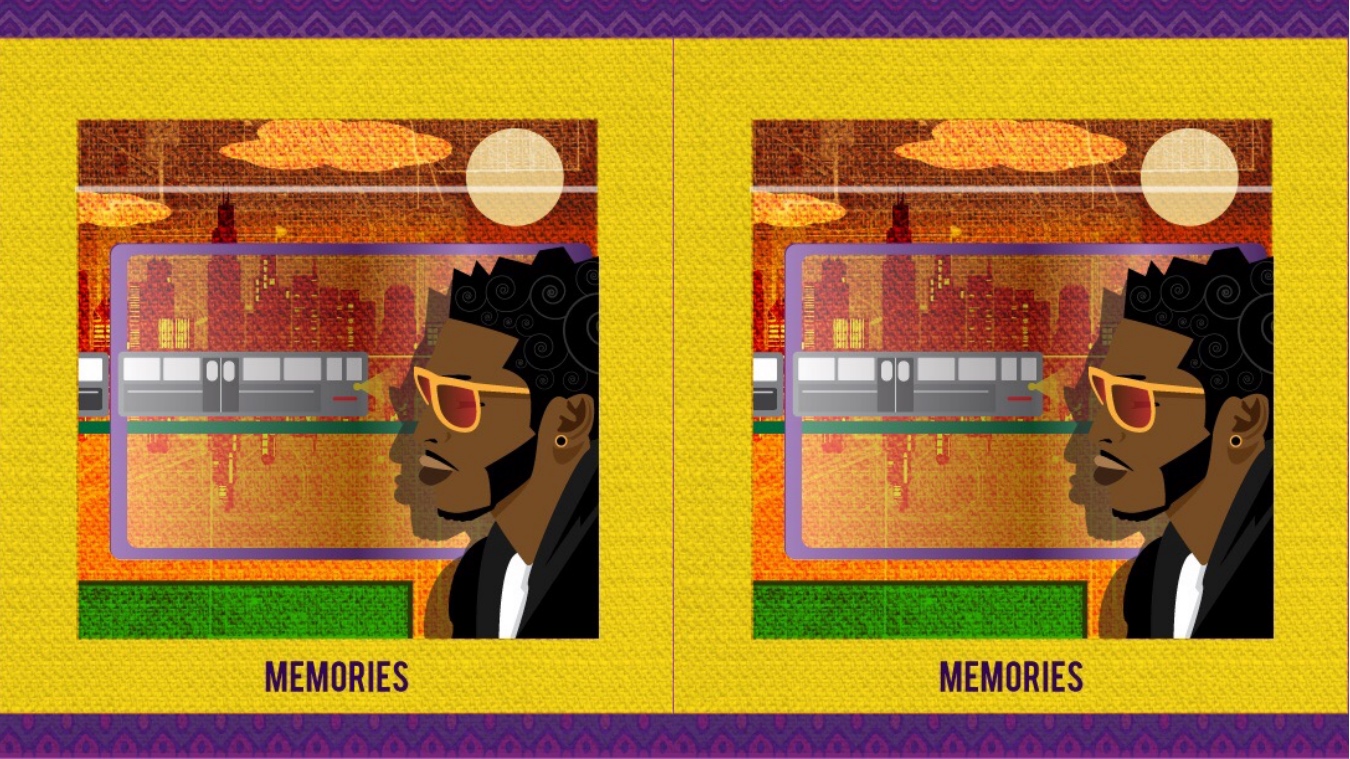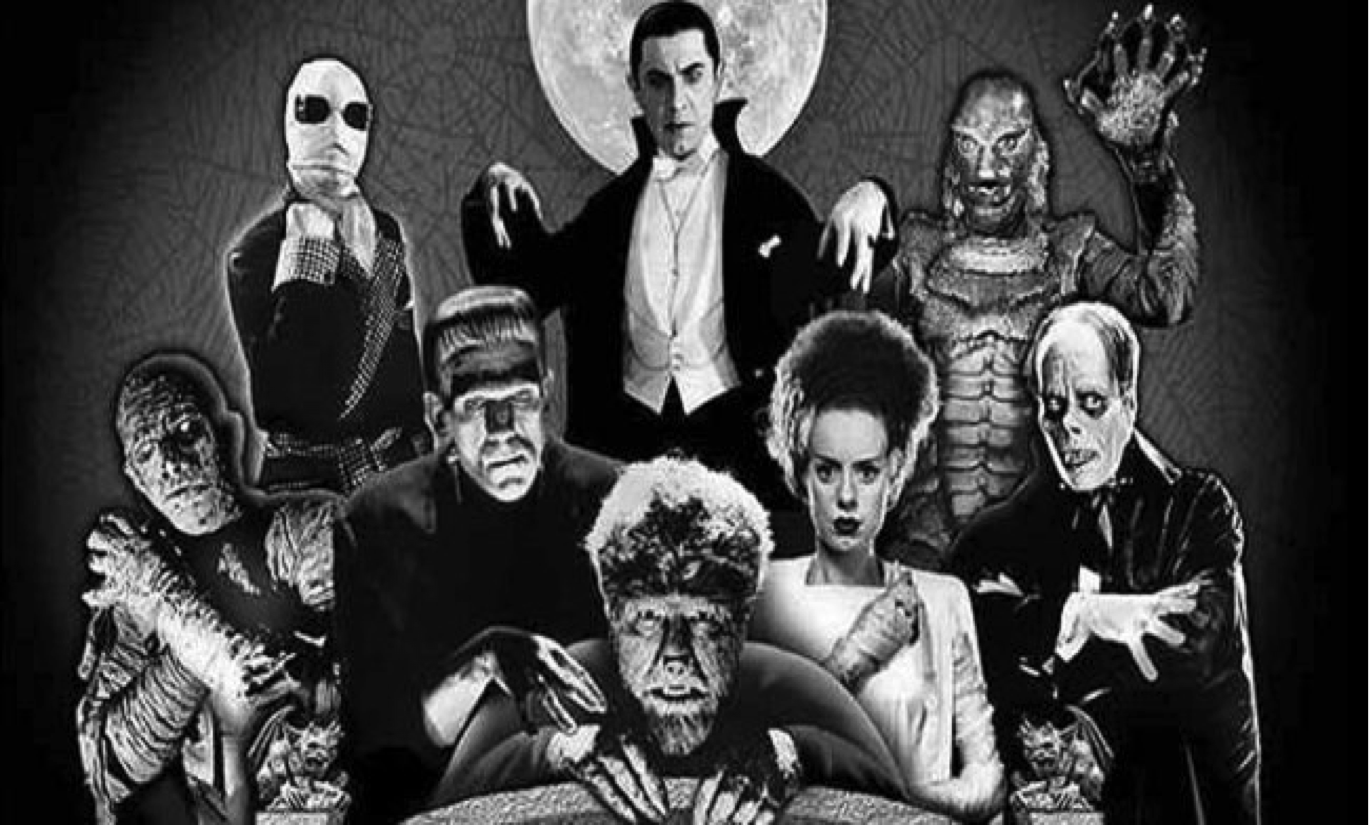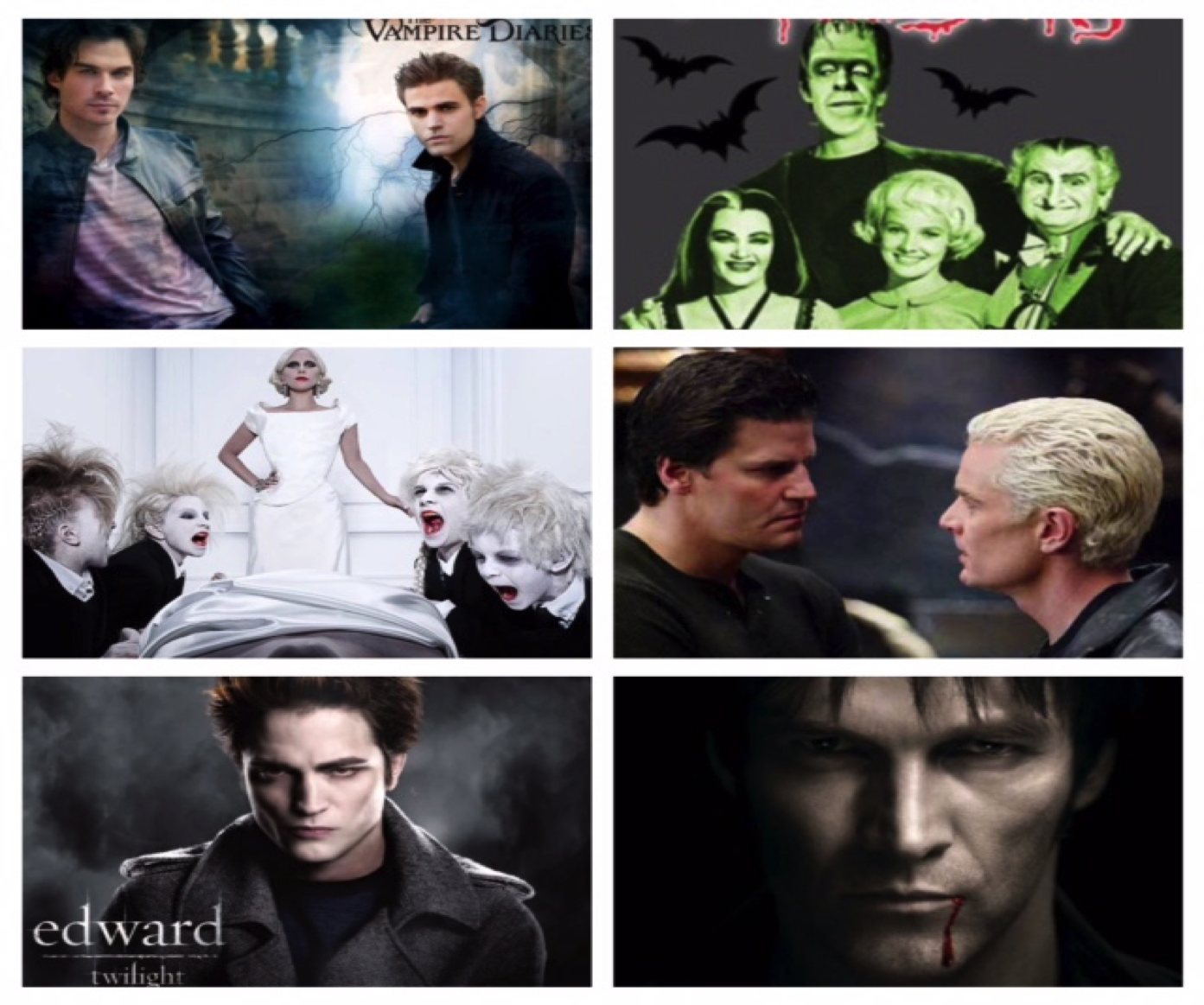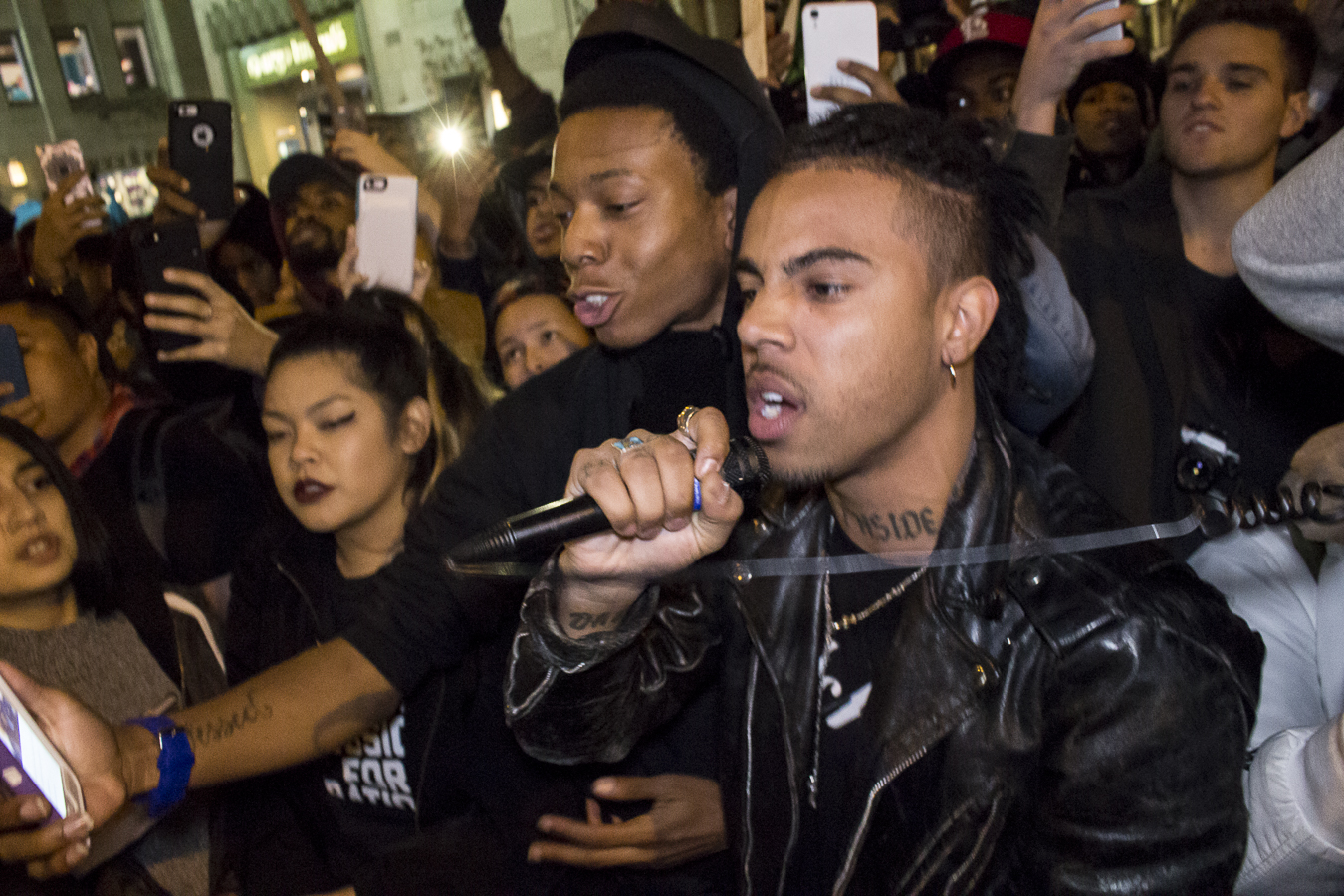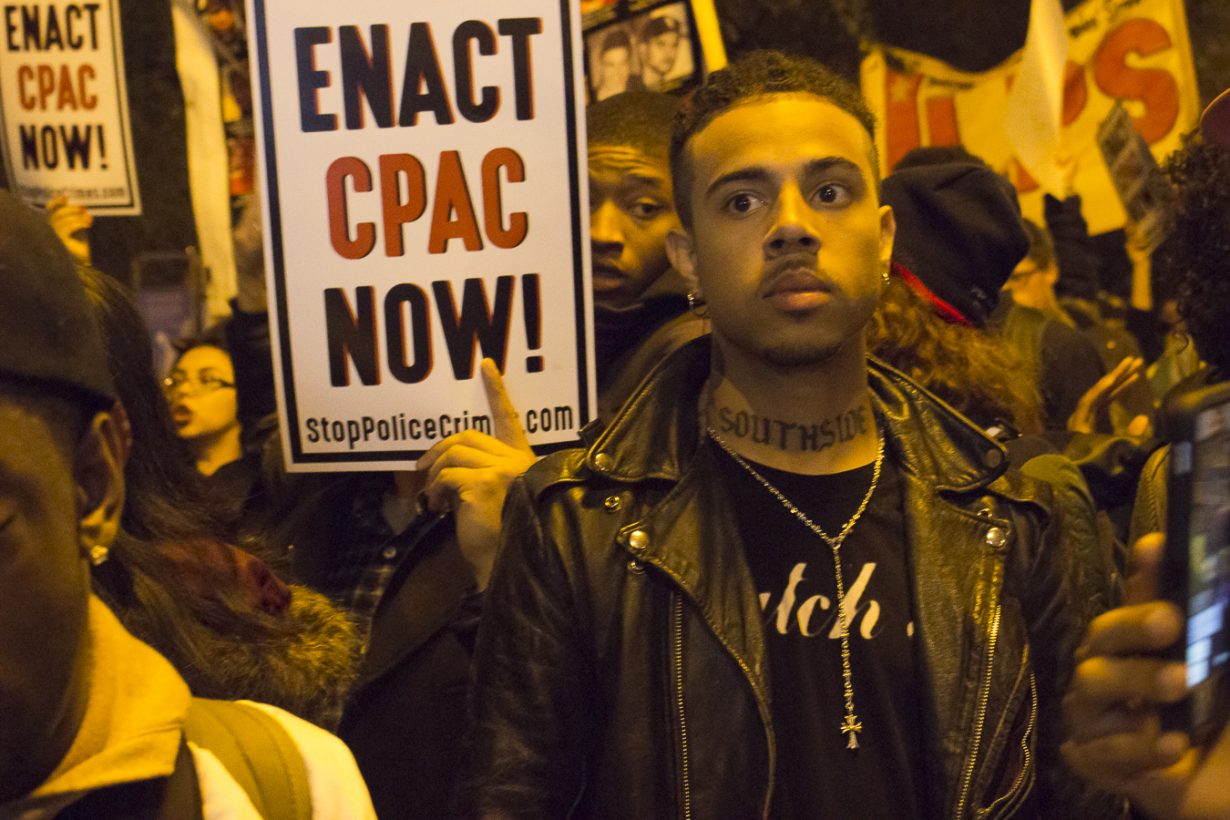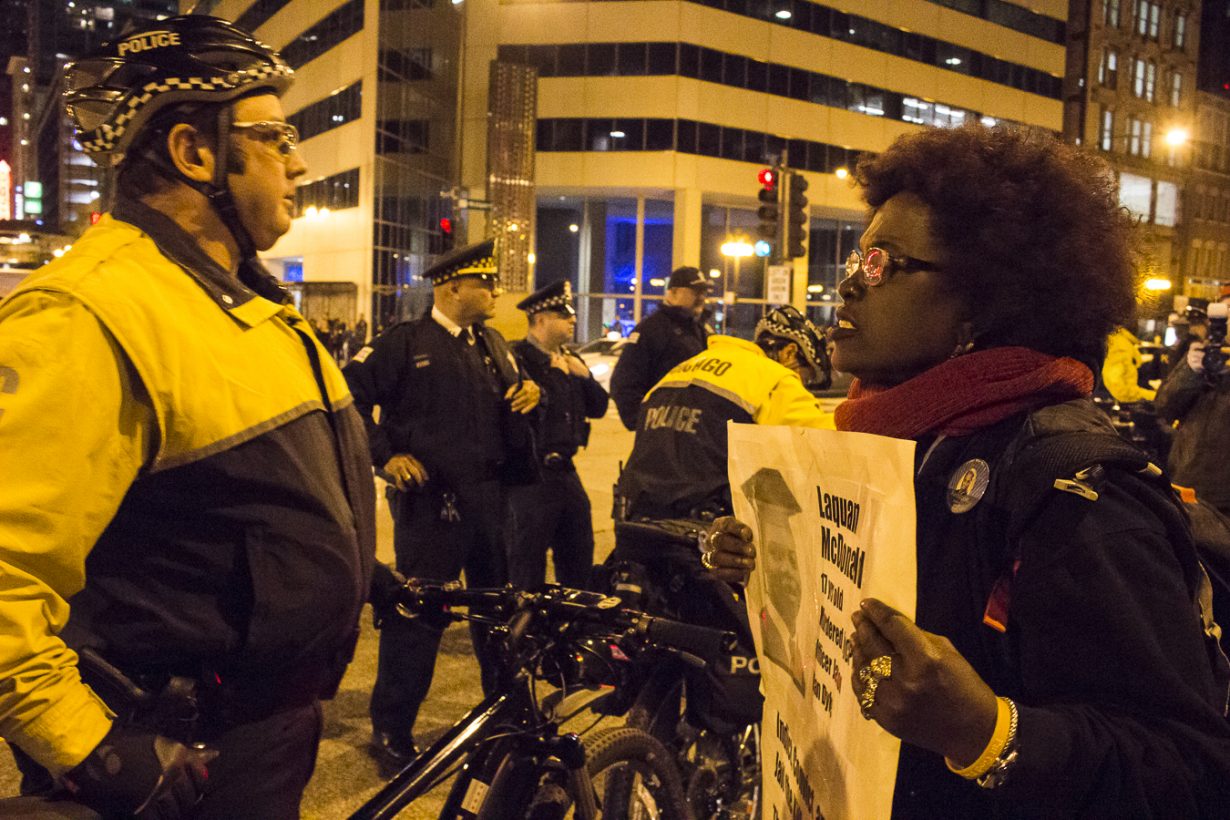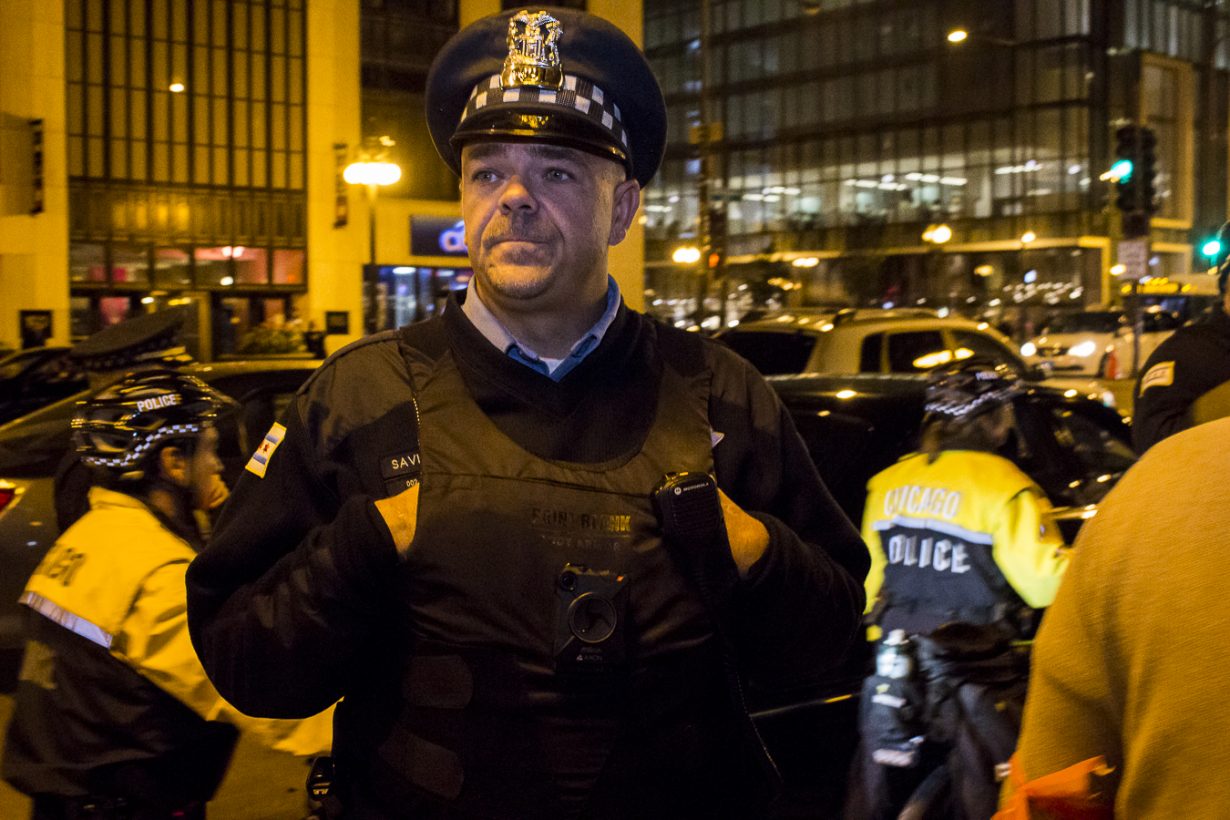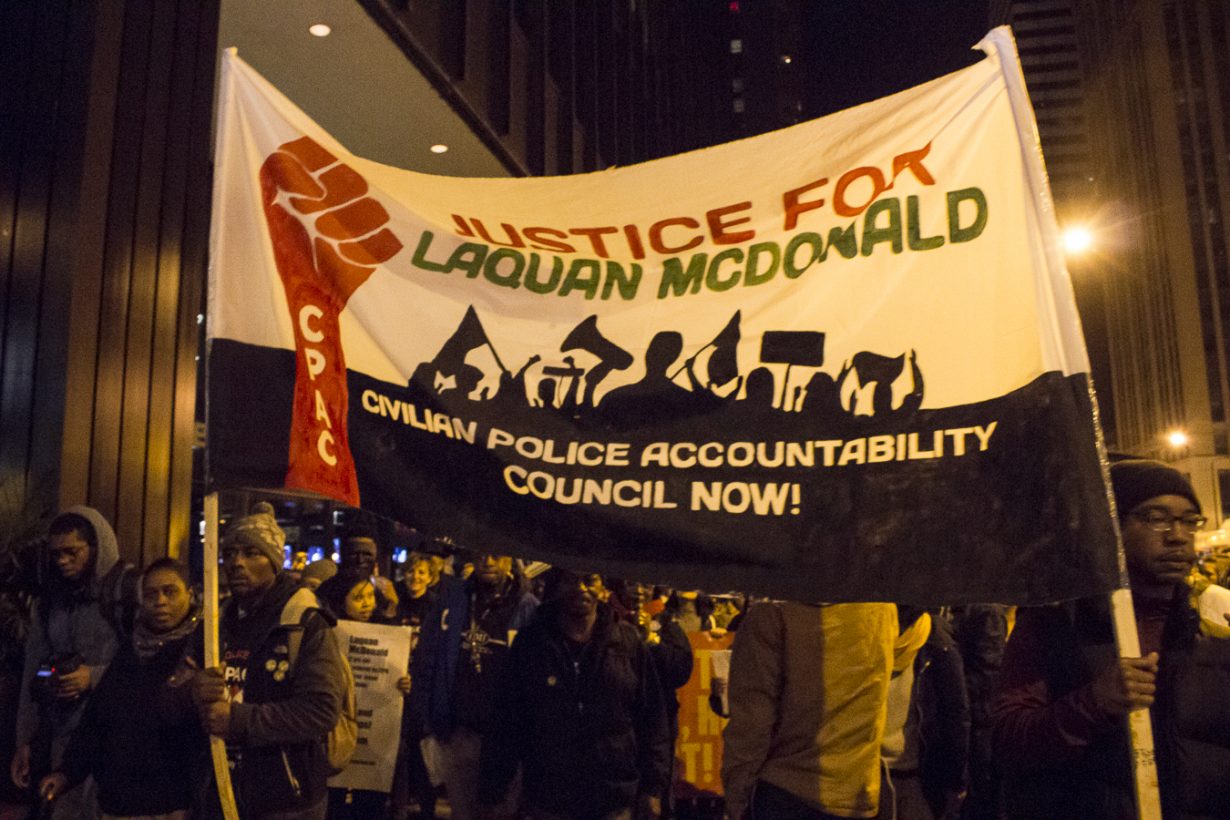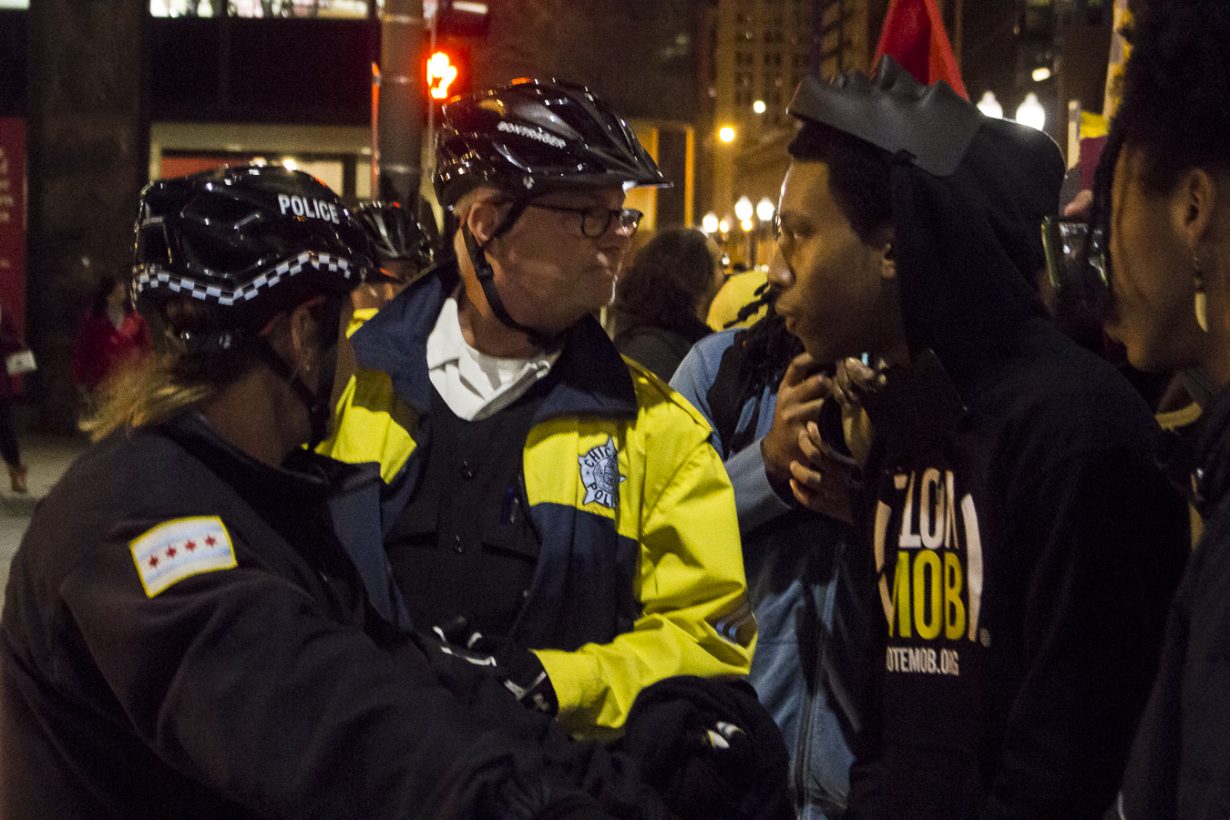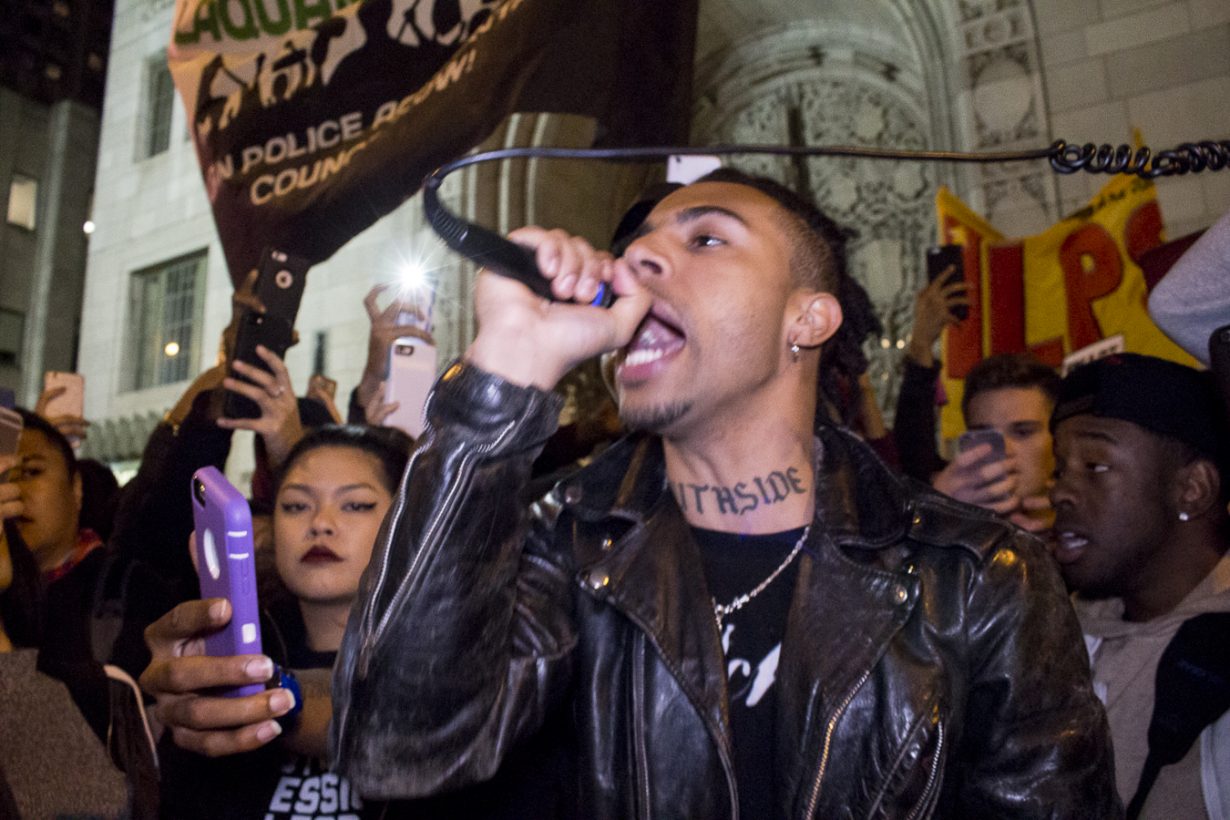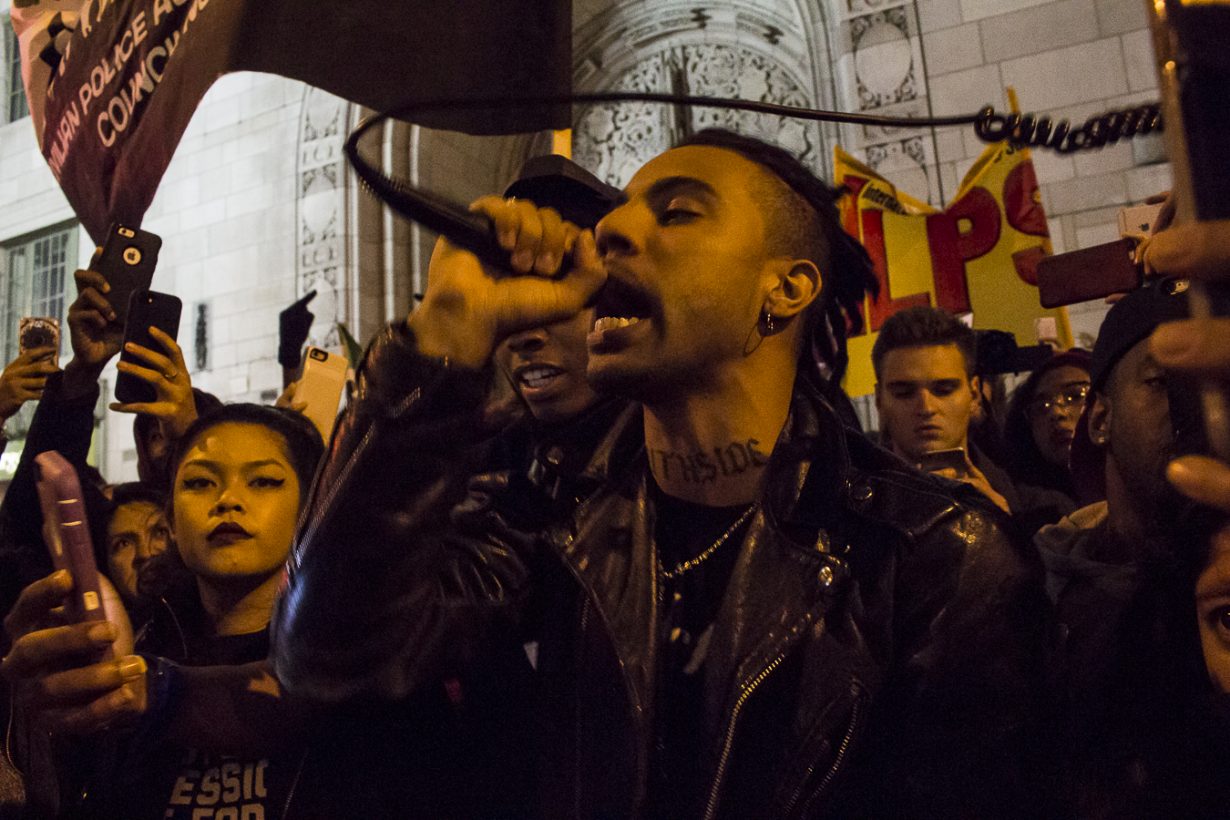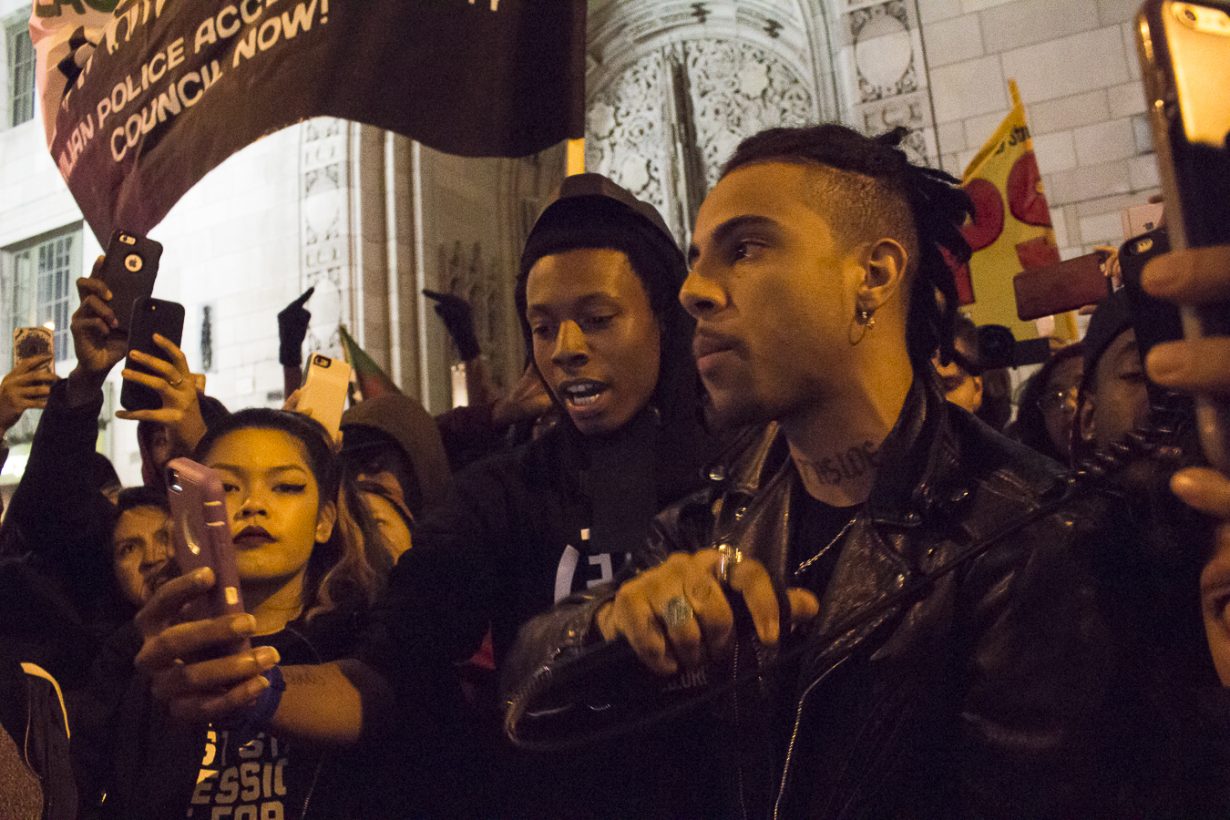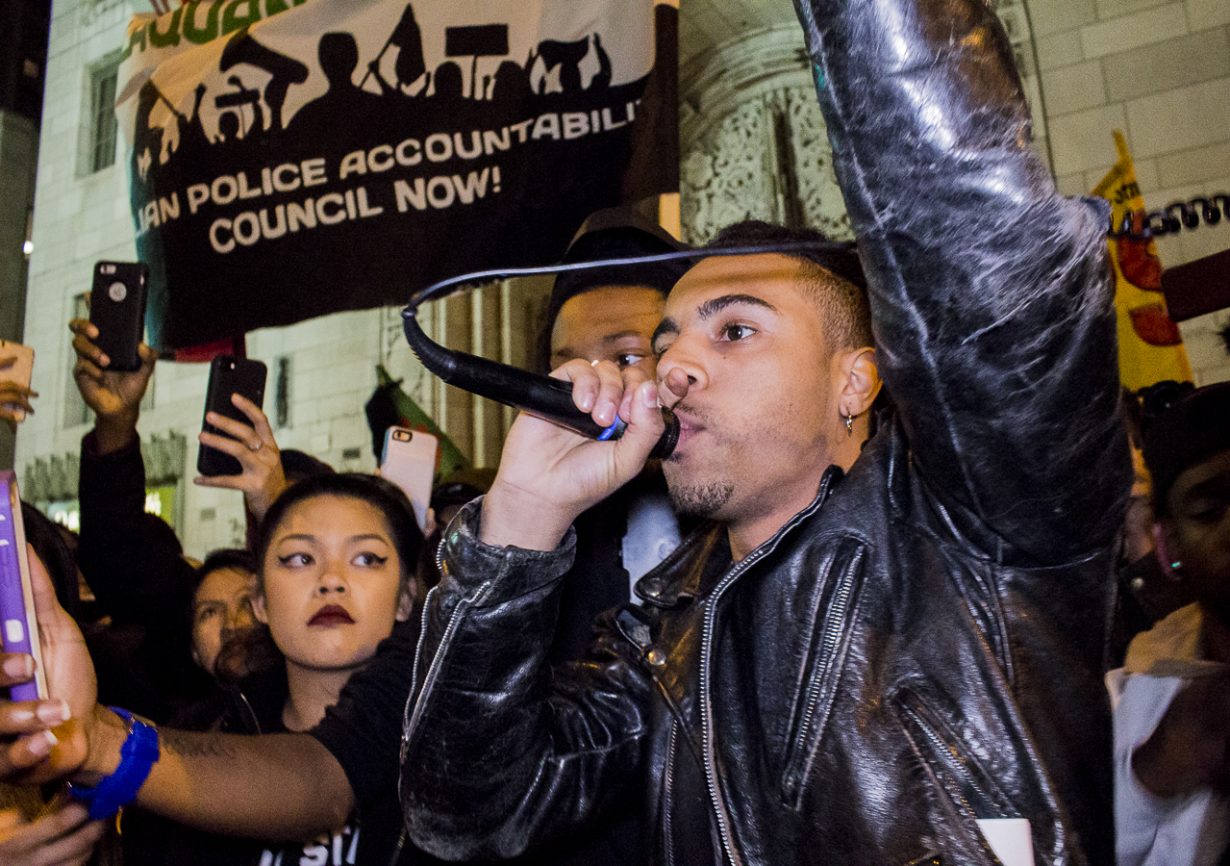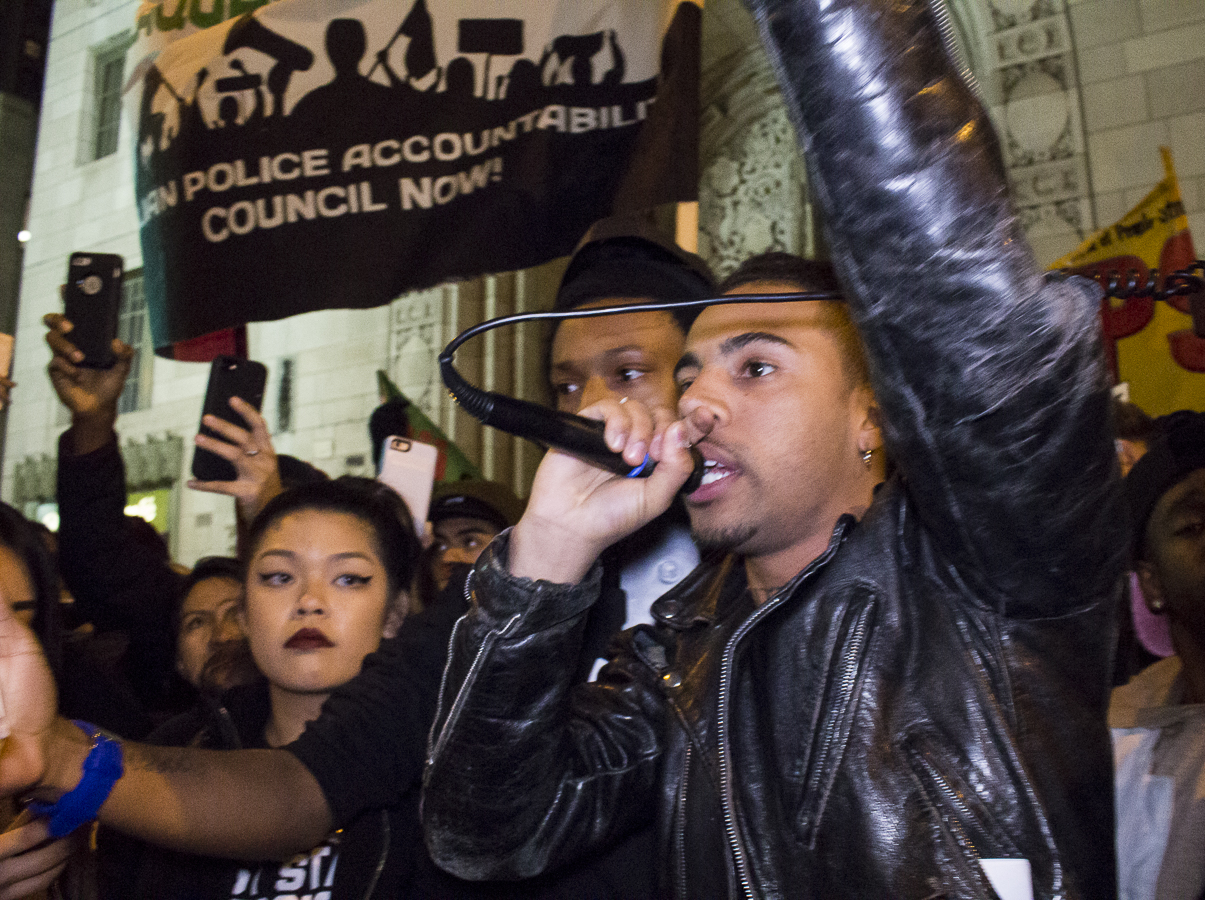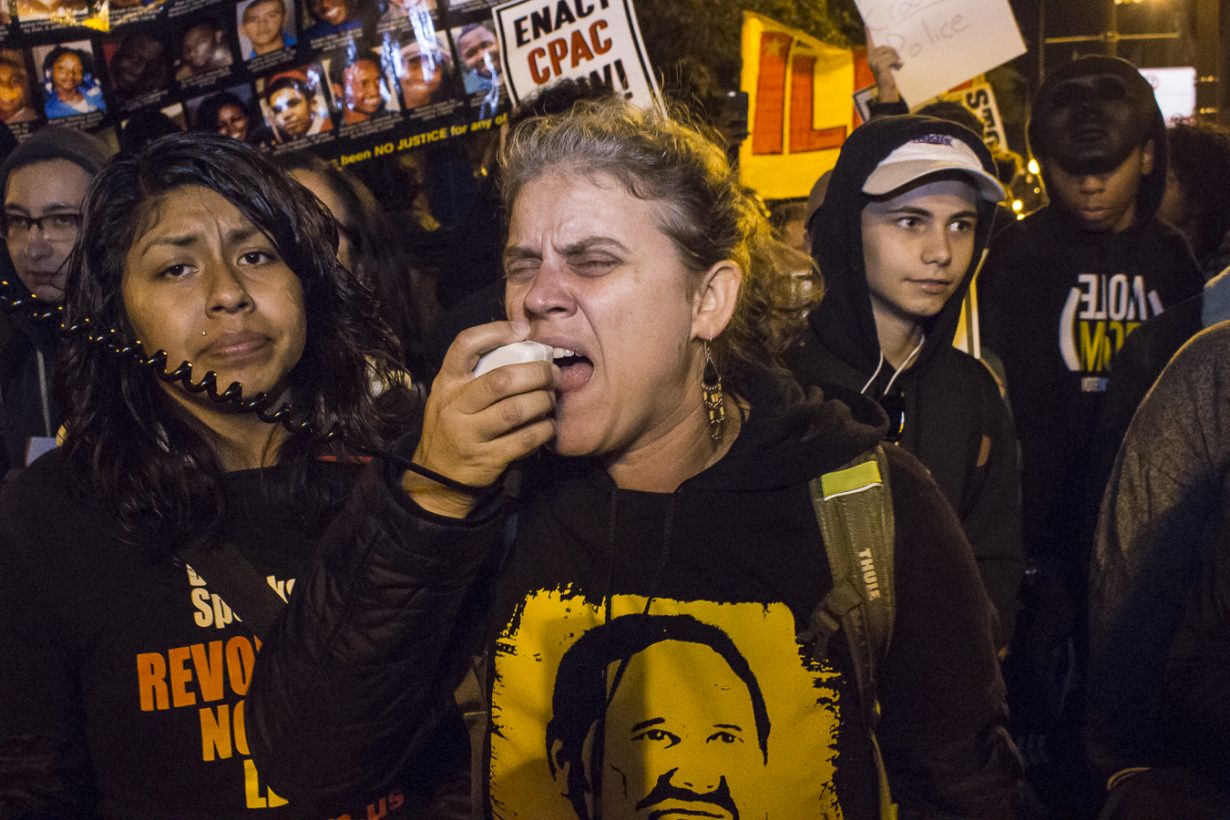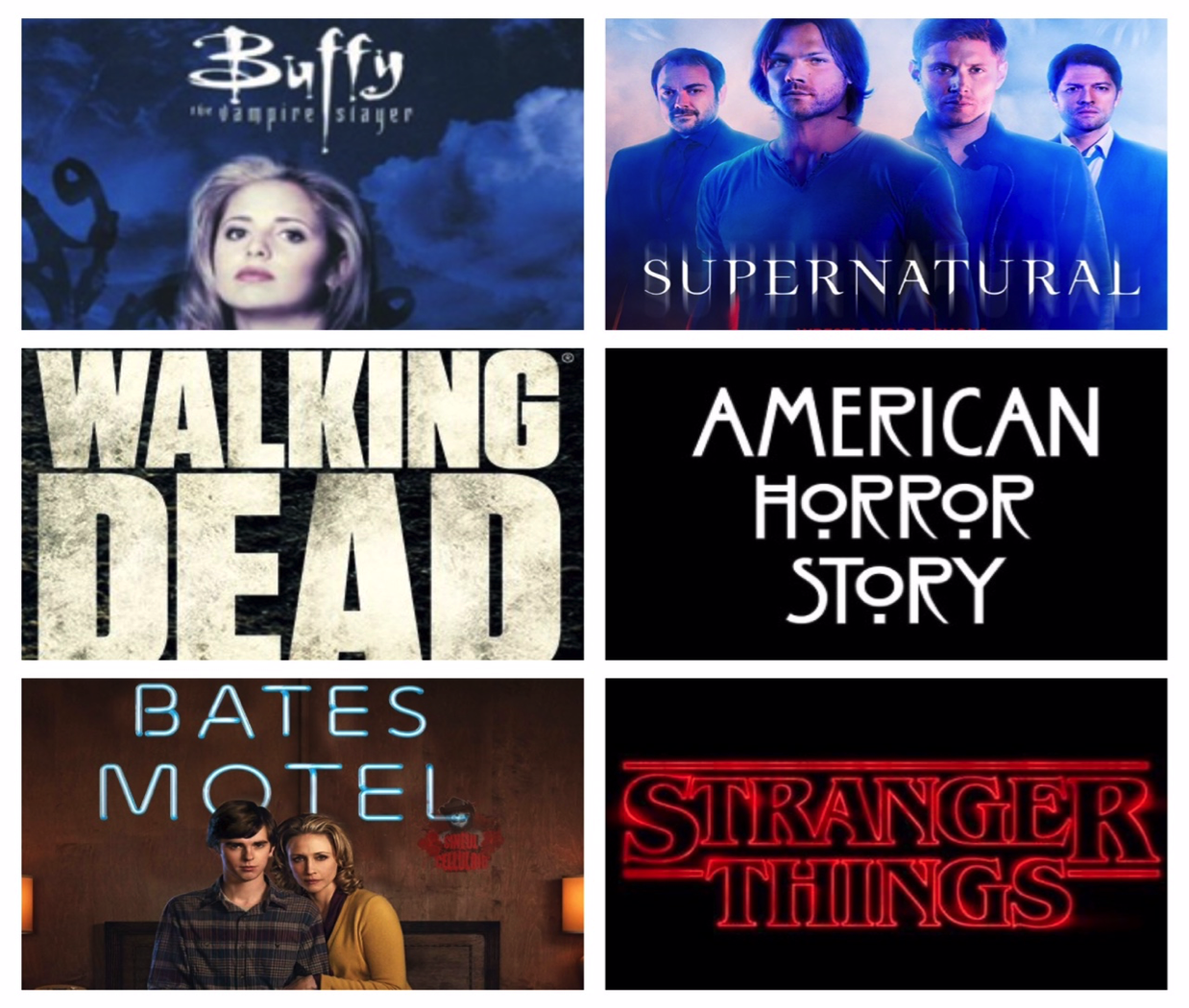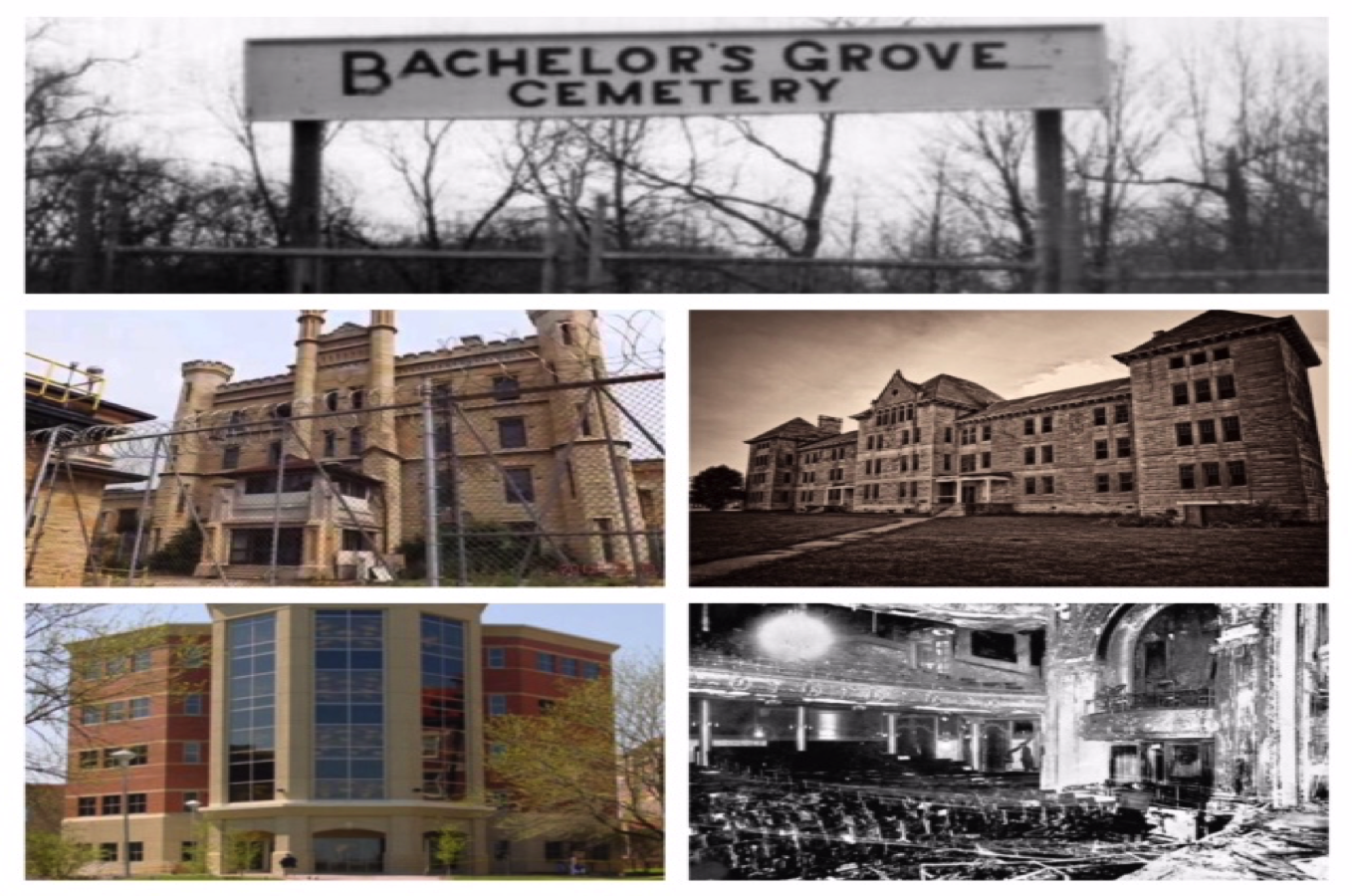The Boy Illinois releases "Memories" from upcoming project Home Court Advantage
November 3, 2016Chicago Hip Hop,Ruby Hornet,The Boy Illinois,CamQuotesMusic
The Boy Illinois might be on tour with Lupe right now, but that's not stopping his creative process! He just dropped off a new joint called "Memories" and it's of the same quality you now expect from The Boy Illinois.
Memories is laying the groundwork for Illinois forthcoming release "Home Court Advantage". Bringing a classic lyrical fun feeling that has been lost in hip hop. Illi creates a story, placing the listener in a setting where you can visualize everything he spits, from riding the "L" (CTA Train), to not making money yet creating opportunities. A short song with a plethora of lessons and life combined, Memories takes you back to dope punch lines like "Hit a lick like I never had a PayPal." With a catchy hook & mid tempo flow, The Boy Illinois effortlessly states his claim of being righteous but all about success, money, being the best and coming up with his team from day one.
Horror Movies: How Have They Changed?
October 31, 2016Dracula,Frankenstein,Wolf Man,Wizard of Oz,Horror Films,Supernatural Themed Movies,1930s,1940s,Vampire,Were-wolf,WitchFilm,Editorials
Since the early 1930s, after the release of the first talkies movie, monster movies became a major hit. Films like Dracula and Frankenstein set the president for horror films during this period.
Here’s a look back at a few of the original "monster” movies and how these supernatural creatures were portrayed during the 1930s/1940s in film:
- Dracula (1931) —> The film begins with local residents speaking about the legend of Count Dracula as a vampire, creatures that feeds on the blood of humans. Renfield, who plays a logical minded non-believer at the beginning states that it is a matter of business. Renfield says that he must go up to visit Count Dracula. The representation of vampires in Dracula is shown through the coffin in a dark, dirty basement with bugs and rodents. This image is not as glamorous as how vamps are portrayed in today’s movies and television. However, there are elements of vampire myths with strong ties to how they are viewed in television and movies today. Even the smallest amount of blood draws in a Vampire, which is still true in Vampire film and shows today. In Dracula, even the sight of a cross repels vampires. This mythical ideal has also been used in on-screen content such as Buffy the Vampire Slayer. Dracula’s appearance doesn’t appear in the mirror, which goes along with myth that vampires can’t show a reflection in mirrors.
- However, there are other elements, both mythical concepts of vampires as well as on-screen presentation and formatting, that has changed over the years. For example, the light that hits around Dracula's eyes, magnifies his eyes and leaves the rest of his face in shadows. Dracula’s lit up eyes seemingly draw in his victims, while mildly paralyzing them enough so that he can feed on them without a fight. This image of glowing eyes in vampires hasn’t changed completely, but has been altered in correlation with technological advancements. Dracula is able to enter into Lucy Westenra's room without an invitation inside, which goes against the famous myth that vampires need to be asked inside a person’s home; a concept that is often employed in vampire themed movies and television today. Renfield belongs to to his “Master,” Count Dracula. Renfield’s persona is different. It appears he has gone “crazy.” His new behavior is also shown in a newspaper story that states that was “a raving maniac; his craving to devour ants, flies, and other small living things to obtain their blood puzzles scientists. At present he is under observation in Doctor Seward’s Sanitarium near London.”
- Professor Van Helsing believes that Lucy death was the result of a vampire; but his associate Dr. Seward argues “Modern science does not admit to such a creature.” This theme of believe vs. non-believe and sane vs. insane appeared to be a very structured way of introducing the supernatural; we also see this concept in movies such as Frankenstein and Wolf Man.
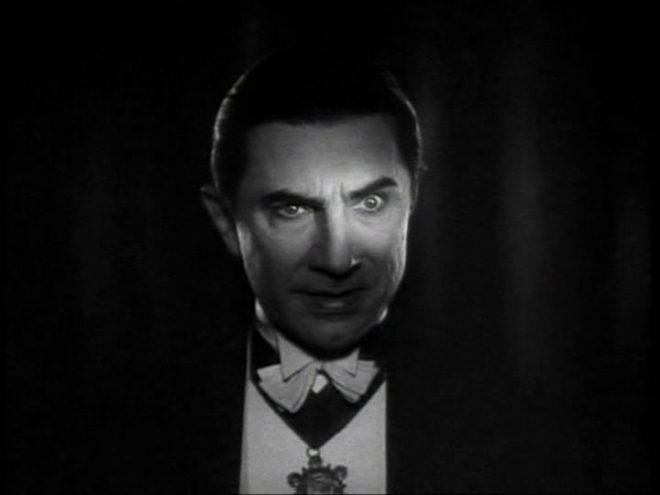
- Frankenstein (1931) —> The film begins with the famous opening presentation of Frankenstein that warns the audience what they are about to see may “horrify you, and may even shock you”; a presentation that is often reused even today when introducing a Frankenstein-themed story line. The story opens up with Henry Frankenstein, a scientists who is creating new unusual experiments and attempting to creating life through science by his “own hands.” When those closest to Henry discover his disturbing experiments, Victor calls Henry crazy at the idea that Henry thinks he could create such a monster. Henry truly believes that his experiment will work, stating, “A minute ago you said I was crazy. But tomorrow, we’ll see about that." But it is important to note that even if Henry's invention works, doesn’t make him any less crazy. Maybe he is crazy for simply conjuring up the idea to create this inhuman creature in the first place, whether it works or not.
- Once Henry’s creation comes to life, he screams, “It’s alive! Now I know what it feels like to be God.” Henry doesn’t see the flaws in his creation plan or that it could be potentially dangerous, and that no human being has the power to play God. Henry refuses that it could be dangerous when Dr. Waldman addresses this issue with Henry. Henry seems to believe that dangerous and adventurous are synonymous. “You have created a monster and it will destroy you,” said the doctor. “Patience, I believe in this monster, as you call it,” Henry responds. After Henry experiences his creation's behaviors, he starts to realize that he created a monster. Henry and Dr. Waldman then attempt to try to kill the creature.
- The audience can see these “shocking” actions from the creature of Frankenstein coming. There is a visible lead up to Frankenstein’s attacks on Dr. Waldman and Elizabeth create a sense of build up and even intensity, to some extent, for audience members. Yet the build up and intensity differs from movies and tv shows today. On-screen horror content today is created by using pop-outs and sudden actions shock audiences. Every scene is pre-meditated, from the slow creation of Frankenstein to the crowd of people with lit torches chasing down Frankenstein. It is believed that Frankenstein, the creature, is finally dead and the town rejoices. However, the film Frankenstein’s Bride reveals that Frankenstein is still alive. This method of shocking the audience by bringing about a part 2 to the story is an example of when films and television first began; a method that still exists today.
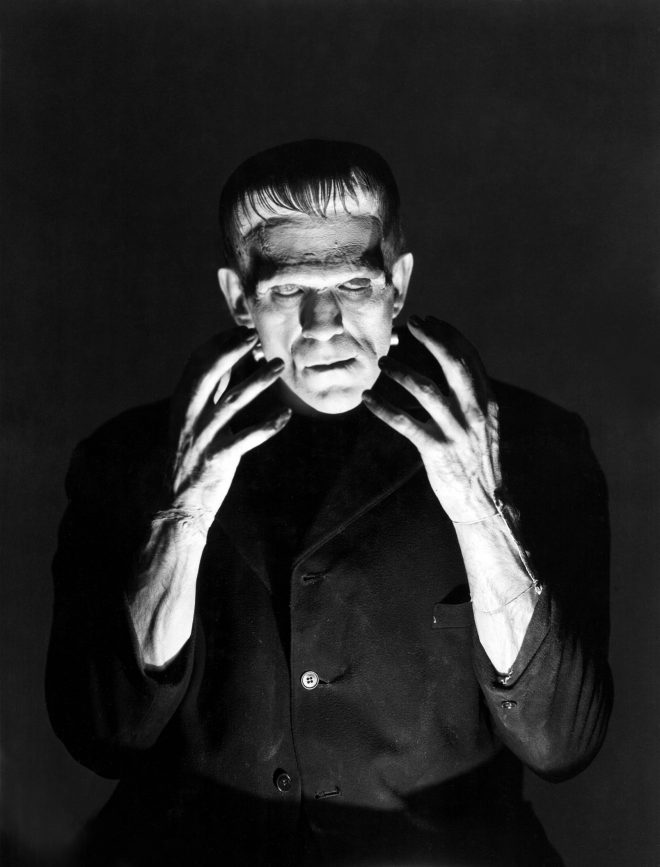
- The Wolf Man (1941) —> The film opens up by providing a definition at the beginning; a method that rarely, if ever, that still lives on in films and television today. Lycanthropy (werewolfism) - a disease of the mind in which human beings imagine they are wolf-men. Larry Talbot, who is the lead role, portrays a kind gentleman with clear moral boundaries and standards. Yet, his morality is put into question after killing the fortune teller, who was a were-wolf. Although Larry thought he simply killed a wolf, the appearance of a dead man challenged everything he thought that he knew. Were-wolf myths in the film aren’t as common as in today’s on-screen were-wolf lore. For example, “A were-wolf is a human being who at certain times of the year turns into a wolf,” says Gwen Conliffe. “Every were-wolf is market with a pentagram, it sees it in the palm of his next victims hand,” she continues.
- Although there are no surprises, with completely expected scenes, audiences during the 1940s may have had different perceptions of shocking and unexpected occurrences in films. Maybe it is the telling of the lead character’s story, rather than unexpected plot twists, that entertained audiences during the 1930s and 1940s.
- Larry’s first kill as a were-wolf shows hesitation, briefly addressing his inner humanity and the morality of his human side. Yet, the animalistic primal urges lead Larry to ultimately kill. Larry is hated by the towns people as an animalistic murder for killing the psychic who he seemingly thought was a wolf. The doctor views Larry as sick when Larry asks the doctor if were-wolves exist; because he is mentally sick, the Dr. states that he should leave town as a result of his “sickness”; Sir John Talbot ties up his son, Larry. Sir John tells the doctor that Larry will realize this is all in his head after the hunt is over. However, the gypsie women’s words force Sir John to confront his thoughts/suspicions all along that maybe Larry really is a were-wolf. When the were-wolf Larry attacks Sir John, Sir John has no choice but to kill the animal, his son.
- As in movies such as Dracula and Frankenstein, Wolf Man presents a similar theme of these supernatural creatures in which you need to see to believe. However, seeing these creatures also brings these characters to question their own sanity.
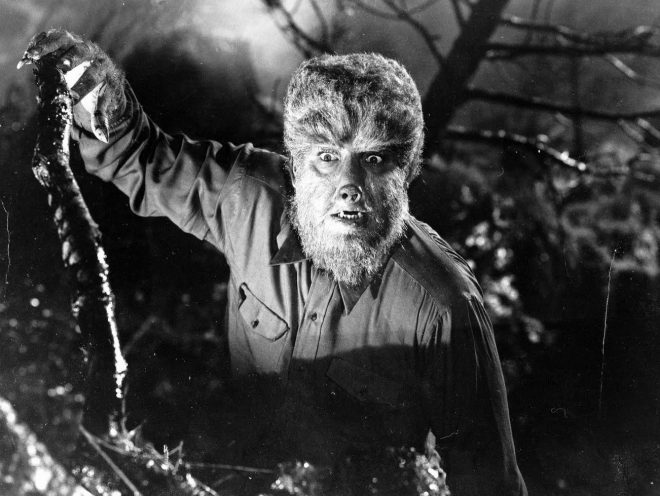
- The Wizard of Oz (1939) —> This film differs from the typical image of scary movies involving a supernatural creature/s during the 1930s/1940s period; Yet, the Wizard of Oz was the first popular portrayal of witches in movies. The film doesn’t confine the image of witches as simply evil or wicked. The Wizard of Oz shows the good and beautiful witch, Glinda, who helps Dorothy; versus the Wicked Witch of the West, who sets out for destruction and the powerful Ruby slippers that Dorothy; possesses. This interesting plot line that brings an array of unique, un-human creatures into one story line. Most of the un-human creatures, such as the lion, the scarecrow and the tin man are all morally good; they all have good intentions, despite their self perceived flaws of lacking a heart, a brain, or courage. Movies and tv shows on the subject of witches didn’t become popular until the after the 1960s. The topic on witches expanded largely in the mid 1980s and into the 1990s with films like The Witches of Eastwick, Hocus Pocus, Practical Magic, The Blair Witch Project, etc.
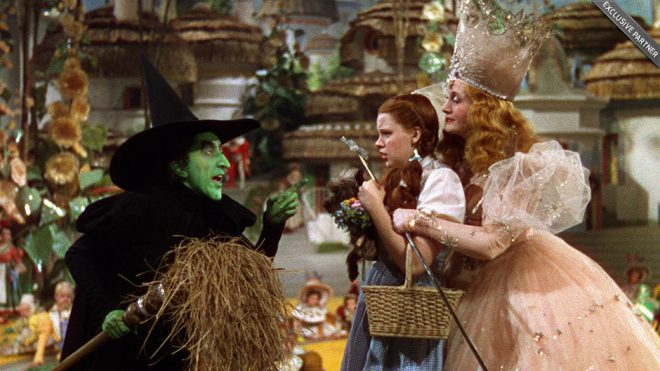
In nearly 100 years, the portrayal of on-screen monster films and television has changed a lot. Movies and television have evolved a lot over a century. But one of its most prevalent examples is in the supernatural/horror genre. Today, horror movies have more intense scenes, more complex and heavily involved story lines, and technology that has majorly enhanced the appearance of these mythical supernatural creatures. Even the depiction of these monsters and their character arcs have become more involved over time. New or old, it is interesting to see the evolution of these legendary on-screen creatures. And of course the original on-screen depiction of the monsters that started it all.
Freaky Deaky 2016 returns bigger than before
October 31, 2016DJ,D.R.A.M,Danny Howard,Duke Dumony,Mamby on the Beach,Chicago Cubs,DJ Khaled,San Holo,Lil Dicky,Freaky Deaky 2016,electric music,Light Em Up,Chicago,Jeremy Franklin,Halloween,disclosure,Travis Scott,porn and chicken,A$AP Ferg,"freaky deaky",hip hopReviews,Music
Freaky Deaky took over Toyota Park for an impressive return with a weekend filled with unforgettable moments.
Festival goers in their best homemade or store-bought costumes made Freaky Deaky their ultimate Halloween playground. The three stages: The Shrine, The Big Top, and The Crypt stage were perfectly crafted to capture the eerie Halloween feeling. That feeling was matched with incredible performances from a stacked lineup during the three-day weekend.
Day 1 - Photos - Jeremy Franklin
The first day saw early support from local electronic duo The Trap House and San Holo. Naming a few the first day saw a strong start to an even more powerful finish.
The comedian turned rapper Lil Dicky used his humor to bring a quick laugh along with his lyrically impressive rap routine. Lil Dicky a true showman, brought his colorful personality to life.
Rapper Travis Scott made his return back to Chicago following his Lollapalooza performance in 2015. Running into no similar issue Scott didn’t disappoint fans who were eagerly awaiting his return. Scott ended his set with his hit record “Antidote”. Going a bit longer then his promoted set time Scott’s mic was cut off making him storm off the stage.
Disclosure’s set was one for remember for years to come. They knew they were in Chicago and they played for Chicago. A Chicago house heavy set made for a surprise treat for those who just wanted to jam to some house classics.
Day 2 - Photos - Jeremy Franklin
The second day of Freaky Deaky is an ultimate blend of bold modern hip-hop entering with in your face electronic music.
Harlem rapper and self-proclaimed trap master A$AP Ferg brought the show. A hip-hop heavyweight in the making A$AP Ferg played to the crowd performing his hit records like Shabba and New Level.
One of the most talked about artist in the past year DJ Khaled closed off the second night on The Big Top stage. A properly named stage for DJ Khaled through the roof persona he satisfied the highly anticipated curiously behind his set. Serving as both the hype man and DJ, DJ Khaled was pulling double in making sure the crowd was living up every second of his set.
Showing love to the Chicago Cubs and their playoffs efforts, Freaky Deaky screened two of the playoff games that were played during that weekend. Festival goers had the chance to chow down on their grilled cheese from Cheesies and hot wings from Harold’s Chicken while watching the cubbies. Nothing can top that.
Day 3 - Photos - Jeremy Franklin
The final night saw early support from local talent Light Em Up and Porn And Chicken. These local artists had the crowd going right from the start of the gates officially opening. A true sign on how incredibly talented our local scene is.
Electronic heavy hitters each brought their unique spin to the final night of Freaky Deaky. Duke Dumont was certainly not one to miss because of his signature tech house set. As well as BBC personality Danny Howard, and his perfectly crafted set list of electric bangers.
In just it’s second year Freaky Deaky created and filled a void that the Chicago music scene was missing. Along with young festivals like Mamby on the Beach and Reaction NYE, React Presents continues to add to Chicago’s rich music history.
Freaky Deaky is the perfect escape and the best way to celebrate a Halloween weekend with music. With clear skies and an unusual warmer weekend in late October, Freaky Deaky couldn’t have been any better.
It was a perfect mixture of the visual horrors of Halloween alongside the electric sky of that beamed from the crowds. Freaky Deaky like many Halloween attractions are worth the year long wait.
On-Screen Vampire Characters: Best to Worst
October 27, 2016Grandpa,Edward Cullen,Twilight,Bill Compton,True Blood,Donovan,The Countess,American Horror Story: Hotel,Damon Salvator,Stefan Salvator,The Vampire Diaries,TV,Lily,The Munsters,Angel,Spike,On-screen,Vampires,Buffy the Vampire SlayerEditorials,TV
With Halloween less than a week away, vampires play a major role during this haunting season. Over the past 8 years, the concept of vampires has blow up uncontrollably all over the on-screen platform in television and movies. But which vampire characters were/are the best and worst?
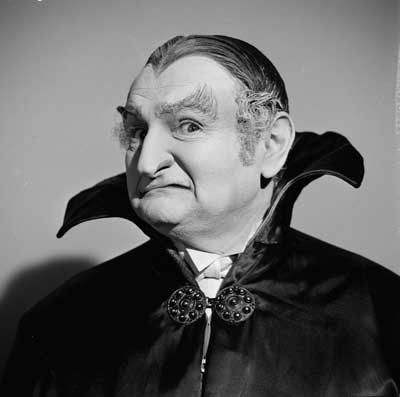
Here is a scale of our top 5 vampire tv series, from best to worst:
- Angel and Spike, Buffy the Vampire Slayer --> Although Buffy’s number one mission as the Slayer is to kill vampires, Buffy usually finds herself attracted to vampires. This presents an interested moral dilemma for Buffy; she involves herself personally with her work while attempting to compartmentalize her job of slaying vampires from the vamps that she falls for. The character Angel presents the unique quality, obtaining a soul; which is unusual for vampires in this show. Yet, the fact that his soul is a curse that could be broken, leaving him soul-less, exhibits an uneasy balance; this see-saw effect could sway at any moment and change Angel, as well as his relationship with Buffy. Spike, on the other hand, calls for a different situation. While Spike’s refrain from killing people is controlled, his involuntary actions start to effect his emotions in relation to others; namely those relationships closely surrounded by Buffy. Buffy the Vampire Slayer is a prime example of how well depicted these characters are; from the protagonist at the very beginning to the to the arch nemesis who gradually becomes a main character with a finely detailed character arc.
- Lily and her Father (known as Grandpa), The Munsters --> Back in the 1960s, fantasy-type series were on the rise in television. Shows like Bewitched and The Munsters presented a desire for these characters to fit in, and to be “normal.” In The Munsters, Lily and her father are vampires. Their attempts to be “good” and to fit into society with other human beings shows their yearning for assimilation. This concept of trying to be “normal” strengthens with every generation: from grandpa, to Lily, to Lily’s werewolf son Eddie. This program's idea of humanization and wanting to be accepted in society is a interesting, unique take from a monster's perspective. The desire for members of the Munster family to have some humanness to them also ventures out of the glorified view of vampires; a view that is overly used in television today.
- The Salvator Brothers, The Vampire Diaries--> This story presents a unique character contrast between vampire brothers Stefan and Damon Salvator. Stefan, the bad gone good vampire forces himself to move according to his moral compass; while Damon straddles the line between good and bad. However, this show follows the same repetitive vampire story formats of attempting to be good and meeting the “love of his life,” along the way. It is this general concept that makes the show simply average in its overall beginning plot. However, it is the actions, unlikely bonds, deaths, and plot twists over the course of the story line that make it above average during the series life span.
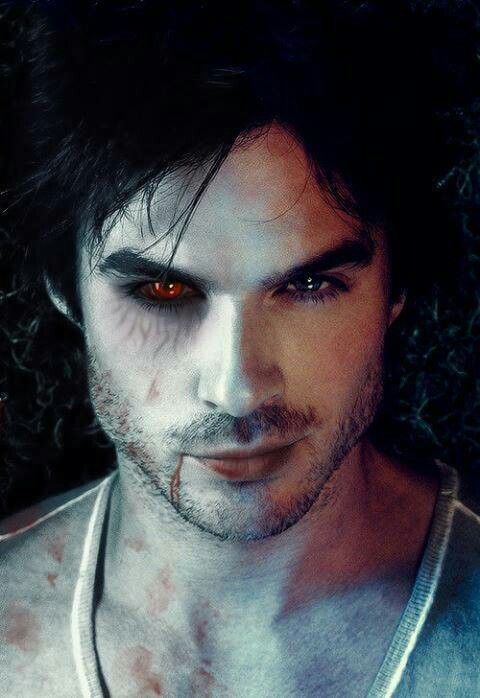
- The Countess, American Horror Story Season 5 --> The concept of American Horror Story’s season 5 alters from the typical vampire man who tries to be good and meets the love of his life. In AHS Hotel, a powerful vampire countess essentially runs a haunted hotel. The Countess’s needs come as first priority and highlight her strength over others. However, her overall mission or goal appears hindered by these primal needs, weakening the overall strength of the character. The character needs to set a goal and aim towards achieving that goal throughout the coarse of the story. This half-attempt is why the portrayal of vampires in the show, namely the Countess, is mediocre at best. It is the Countess’s ex-lover, the vampire Donovan, creates a clear mission throughout the series and persistently tries to fulfill that goal. That is what strengthens the series and further enhances it by creating a unique, unexpected plot twist.
- Bill Compton, True Blood: Bill portrays this overly done concept of vampires in television during the 21st century, and their. Usually, the series or movie open up when they meet an “interesting girl” who becomes the love of their life. However, this theme is over done time and time again over the past 10 years. Bill Compton lacks and in depth character arc. It seems that his only goals are to refrain from killing humans and to protect his newfound love; in this case, Bill wants to protect Sookie. But an "unexpected" change of events causes this “protagonist” vamp to give into his nature of being a vampire.
- Edward Cullen, Twilight: Although the awful portrayal of Edward Cullen are in four of the Twilight Saga films rather than a tv series, this movie collection is definitely worth mentioning as one of the worst vampire on-screen stories. As explain previously, Twilight follows the repetitive pattern of vampire stories that focus on a “protagonist” vampire and his desire to be good while meeting the love of his life at the shown or movie’s start. But what drives this movie over the edge in comparison to other vampires stories with similar plot lines is the terrible acting of the two lead roles. There is a dependence on flashbacks to create the characters and their stories. This film franchise completely lacked character arcs and developments, showing limited quirks, real time experiences, actions and dialogue to establish these character. Additionally, the over-dramatized events, make these scenes seem as if the world was ending; instead of using them as opportunities to highlight climactic scenes. Yet, even with the highly dramatic occurrences, there was almost always one tone/expression that almost every character portrayed: solemnity.
What do you think of our list? Do you agree with our ratings of on-screen vampires? Let us know in the comment section below.
Vic Mensa debuts “16 Shots” video, Chicago police shut up video screening
October 23, 2016Vic Mensa,Protest,Chicago,CPD,Chicago Police Department,16 Shots,There’s Alot Going On,Laquan McDonald,CPAC,marchMusic,News
Vic Mensa released his highly anticipated video for his single “16 Shots”. The record is off of his latest EP "There’s A lot Going On”.
Exclusively on Tidal, you can view the video below. It has become the unofficial anthem to the Laquan McDonald shooting. The shooting occurred when then Chicago Police Officer Jason Van Dyke shot and killing McDonald. Shooting him 16 times.
Mensa was set to premiere his music video with those who joined him and the Chicago Alliance Against Racist and Political Repression (CPAC) last night in Chicago. The protest and march was set to end with an exclusive viewing of the music video. Speaking with officials, CPD officers didn’t allow the LCD truck to pull up next to the demonstrators not allowing for the viewing. Another time and location was set for Mensa to screen the video with fans but that too also was prevented by the CPD.
“16 Shots” is bold telling of a single incident that the world is too familiar with. The gritty truth is captured by Mensa. Using the actually recording of the shooting (not the death) creates and highlights the shocking truth that many aren’t aware of. The beautifully crafted story amplifies its message against the police and it’s political repression.
Check out our photos of Mensa at last night’s march and protest for “Justice for Laquan! CPAC Now!”
Watch here!
Top Thriller Television Shows to Watch this Halloween
October 20, 2016The Walking Dead,supernatural,Bates Motel,stranger things,American Horror Story,Halloween Season,October,Thriller Shows,Horror Shows,Supernatural Shows,Buffy the Vampire SlayerTV,Editorials
As Halloween growing closer in the next two weeks, there are endless television shows in the horror/thriller, and/or supernatural genres to choose from. Here is a list of some of the most noteworthy television series to consider watching during this haunting season:
- Buffy the Vampire Slayer —> Buffy the Vampire Slayer centers around a 16 year old girl, Buffy Summers. The series shows Buffy’s journey of fulfilling her destiny of slaying vampires, among other creatures; one day at a time, this powerful and witty girl continues to fight and save the world, while trying to survive both life as well as high school. The character of Buffy Summers stands out as a strong female leading figure during the late 1990s. Buffy the Vampire Slayer is an example of a supernatural show during a period when the supernatural genre in television was limited and less explored. It’s a great classic show to consider watching this Halloween.
- Supernatural —> This story centers on two brothers, Sam and Dean Winchester, who were raised into the business of monster hunting by their father, John Winchester. The pilot episode opens with Sam and Dean as young children, when their mother was killed by a monster. After Mary Winchester's death, John decided to take Sam and Dean on the road, hunting down the demon that killed his wife; along the way, John kills monsters while teaching Sam and Dean the trade. The series began in 2005 and continued to pave the way for the supernatural television show genre. Similar to Buffy, Supernatural covers a wide range of supernatural creatures in every episode; as well as overall themes in the fight of good vs. evil in every season. Supernatural is the longest running show of this genre; with 11 seasons available on Netflix, this series is sure to keep you preoccupied throughout October.
- The Walking Dead —> Although I have never experienced more than a few episodes of this series, this well established show dives into the zombie apocalyptic world; it has been a fan favorite since its start in 2010. As is the case with many apocalyptic themes in television shows, the main purpose is survival; we, the audience, get to watch the action unfold through character developments and relationships among these characters that help or hinder their primary need to survive. With an IMDB rating of 8.6, this show appears to be a must watch. You can enjoy binge watching the 6 seasons available of The Walking Dead on Netflix.
- American Horror Story —> American Horror Story is an anthology series that makes every season into an individual story. AHS takes the idea to create a horror movie in television format and to tell that story over the course of 12 to 13 episodes. So far, the show consists of 6 seasons: Murder House, Asylum, Coven, Freak Show, Hotel, and Roanoke. If you’re a fan, you may not like every season and it’s theme; however, it is interesting that every season centers on a new story. If you’re new to American Horror Story and all 6 stories, you may want to check it out this Halloween.
- Bates Motel —> Not all of our top picks need to have supernatural elements. Bates Motel comes from Robert Bloch’s 1960s book "Psycho." But with a twist. In Psycho, the leading character is portrayed by 40 year old Norman Bates, who runs Bates Motel with his mother. The novel depicts Norman’s psychological thoughts and feelings and how his impulses to kill become reality, rooted in action. The series Bates Motel serves as a sort of prequel to Psycho; Bates Motel centers on Norman Bates, a high school student who’s mother, Norma Bates, recently bought a Motel. Bates Motel shows the developing relationship Norman has with his mother, Norman's psyche, and how his mind drives him to become a killer in the town of White Pine Bay. This psychological thriller series will always keep you on your toes and have you wondering what Norman is thinking.
- Stranger Things —> Recently, Netflix launched its a new thriller Stranger Things. This series provides a genuine 80s feel with enhanced cgi features where it is appropriate. The show focuses on a group of friends in middle school, when one of the friends mysteriously disappears. Throughout the course of this 8 episode series, the audience discovers more about the boy vanishing and the complicated factors that play roles in his disappearance. The younger kids in this show, namely played by characters friends Dustin, Mike, Lucas, and Will, present a pure sense of trust, friendship, and promise between kids; it shows how children are not tainted by the secrets of the adult world; for instance, the innocent state of mind these boys have, believing that hitting a supernatural creature with rocks and a slingshot and expecting it to work.
- Furthermore, Stranger Things also shows the interesting different family dynamics of the Wheeler family, who seemingly has the “perfect” nuclear family; vs. the Byers family, with a single mom working long, hard hours at the nearby mini mart. Yet, the Byer’s family members have a closer connection and stronger sense of communication with one another. There are many factors that make this powerful new series to watch. Overall, this series shows a collection of scenes filled with complete suspense, moments of laugh out loud comedic material, unexpected alliances, and friendship. This show will leave you wanting to watch more, despite the perfectly wrapped up season finale.
Do you agree with our list? Let us know in the comments section below.
Do the clothes we choose reflect ourselves as a person?
October 12, 2016society,Clothing,Appeal,Confidence,Societal Pressures,Uniforms,Awareness,Cognizance,Personal Taste,SizingCulture,Editorials
What does what we wear say about us?
Do the clothes we choose reflect ourselves as a person? It seems that the clothes that we choose tend to make a statement to us and our personal sense of what we like, how it fits us individually, and of course the revolving door of trends that go in and out every decade; as well as the impression we want to make on the outside world. Clothing can also represent a sense of legality, authority, and prestige in certain uniform design choices.
Is our sense of style tied to something stronger than our cognitive decision to choose clothing patterns? According to an article published by the New York Times, that we think with our bodies as well as our brains.
In a series of studies conducted by Dr. Adam D. Galinsky, a professor at Northwestern University, he tested how clothing impacted individuals on their cognitive and psychological processes. In an experiment with 58 undergraduates, students were randomly assigned a white lab coat or normal street clothes; the students were then asked to spot the inconsistencies in a selective attention test. The results: those who wore the lab coat made significantly less errors than those wearing street clothes.
“I love the idea of trying to figure out why when we put on certain clothes, we might more readily take on a role and how that might affect our basic abilities,” said Joshua I. Davis, an assistant professor of psychology at Barnard College.
Or is it more simple than that? Is the clothing that we choose merely a result of personal taste and what we like. For many of us, comfortability is key. If I could, I would live in sweatshirts, leggings, and converse or boots. However, this isn’t always socially acceptable.
Society has taught us what does and does not look appropriate in certain situations; for example, weddings, funerals, the work place; but even some places of work are starting to accept jeans as a viable clothing option at certain places of employment
This begs the question: what else is society telling us about what to wear?
Confidence also plays a key role in what we choose to wear. It influences how we carry ourselves and how we interact with others. Sizes small through large and “regular" sized pants is a major limitation in our society.
Sizing in certain clothing stores like Abercrombie and Fitch, who just recently starting carry above a size 10 in women’s clothing, have started carrying larger sizing for the main purpose of selling product.
There are many components that factor into how we choose to dress ourselves everyday. Personal taste, self confidence, and how we believe others view us all play roles in the decision making process. Yet, it is important to note that “others” exceeds outside of the people you pass by in everyday life. Society largely impacts how we view ourselves in respect to clothing.
Top 5 Scariest Places to Visit This Halloween
October 11, 2016Abandoned Insane Asylum,Death Alley,Iroquois Theater,Joliet Correctional Center,Benedictine Unviersity,Peoria State Hospital,Bachelor's Grove Cemetery,Abandoned Prison,Haunted University,Hautned Cemetery,Haunted,Scariest Places,illinois,Halloween,HorrorCulture,Editorials
Now that it is the month of October and with Halloween approaching, haunted houses filled with fake zombies and dropping skeletons are opening to the public. But what about the all year-round locations that have claims of hauntings? Considering the local clown outbreaks in Chicago, the normal, everyday parks may seem the most terrifying to some people. But here are a few examples of some of the most noteworthy real-life horror locations in Illinois.
1 Bachelor’s Grove Cemetery in Midlothian, IL —> Among the Rubio Woods lies one of the most haunted cemeteries in Illinois; maybe even one of the most haunted cemeteries in the United States as argued by history lovers and ghost fanatics. Bachelor’s Grove Cemetery first burial was Eliza Scott in November of 1844, before the Civil War. Newspaper reports have also stated earlier burials held at Bachelor's Grove. In 1935, the Blue Island Sun Standard published that William B. Nobles was buried in Bachelor's Grove Cemetery in 1835. However, Bachelor’s Grove wasn’t legally considered a graveyard until records of the cemetery came to light, after the property was taken over by Frederick Schmidt in 1864.
Since the 1960s, Bachelor’s Grove Cemetery has been closed to car traffic; making it even more terrifying that the only way to roam around this graveyard is by foot. Locals over many generations report sitings of phantom cars, ghosts, glowing floating orbs; and more notably, legends of a ghost known as Madonna of Bachelor’s Grove, the Caretaker who supposedly lived on the grounds killed his family; the Hook Man, the farmer and the horse who supposedly drowned in the Bachelor’s Grove pond, the phantom dog, etc. There has also been factual evidence present of satanic rituals and grave openings/robbings at Batchelor’s Grove since the 1960s.
2 Peoria State Hospital in Bartonville, IL —> Peoria State Hospital, formerly known as the Illinois Asylum for the Incurable Insane, was active between 1902 to 1973. Because the hospital shut down in the early 70s, there isn’t too much factual information accessible online about the history of the establishment. Many reports, including the leading Doctor Dr. George A. Zeller of Peoria State Hospital, speaks of strange occurrences inside the hospital during its time of operation. One of the incidents being in 1910, when a patient by the name of Manual Bookbinder passed away. At Bookbinder’s funeral, numerous witnesses in the crowd, including Dr. Zeller, reported seeing Bookbinder’s ghost standing near a tree. According to Dr. Zeller, the funeral procession had to open the casket to verify that Manual Bookbinder, or Old Book as they called him, was in fact still inside his coffin.
3 Benedictine University in Lisle, IL —> Benedictine University, formerly known as St. Procopius College, was established by the Benedictine monks in 1887. The University’s nearby wooded area, along with Lake Saint Benedict and the college’s local cemetery emphasize the creepy feel of the campus. Ursula Bielski is a former Benedictine University student, historian, author, and founder of Chicago Hauntings Inc.; Bielski has strong credibility as the leading figure in the Chicagoland’s folk lore. According to Bielski, numerous students even tried to contact a ghost/spirit through the use of a ouija board. Reports of rumored exorcisms, alleged deaths on campus, and other supposedly strange occurrences have led some to believe that ghosts roam the campus of Benedictine University.
4 Joliet Correctional Center in Joliet, IL —> For nearly 150 years, Joliet Correction Center was home for small-scale criminals to noteworthy killers; including the infamous serial killer John Wayne Gacy. Gacy was sent to Joliet Correctional Center before being transferred to Stateville Correctional Center. The prison first originated in 1858 as a replacement for Alton, Illinois’ first ever state prison. Over time, Joliet Correctional Center became one of the nation’s largest prisons. The prison closed from needed cut backs in the corrections budget. But is the abandoned prison really haunted by supposed stories of ghosts; or is it the fact that it is an abandoned prison that people create these folklores?
5 Iroquois Theater and Death Alley in Chicago, IL —> On December 30th, 1903, the Iroquois Theater burned to the ground after a lighting issue turned out of control. During the night of the fire, about 2,000 people sat inside to watch the musical “Mr. Blue Beard.” That December night, over 600 people died as the fire continued to blaze. The new building that stands in the Iroquois Theater’s place is the Oriental Theater. Some people have claimed to hear screaming and other strange noises inside the theater; others have told stories that exist in the alley behind the theater, which is known as Death Alley. Some have said to have seen the ghosts of those who died in the Iroquois Theater fire over 100 years ago, lingering in the alley.
Do you agree with our list? Are strange, supernatural elements lurking in these supposedly haunted hotspots, or are these just stories of legend and folklore? Many of us might just have to visit these places to decide for ourselves what horror lies behind these stories.

